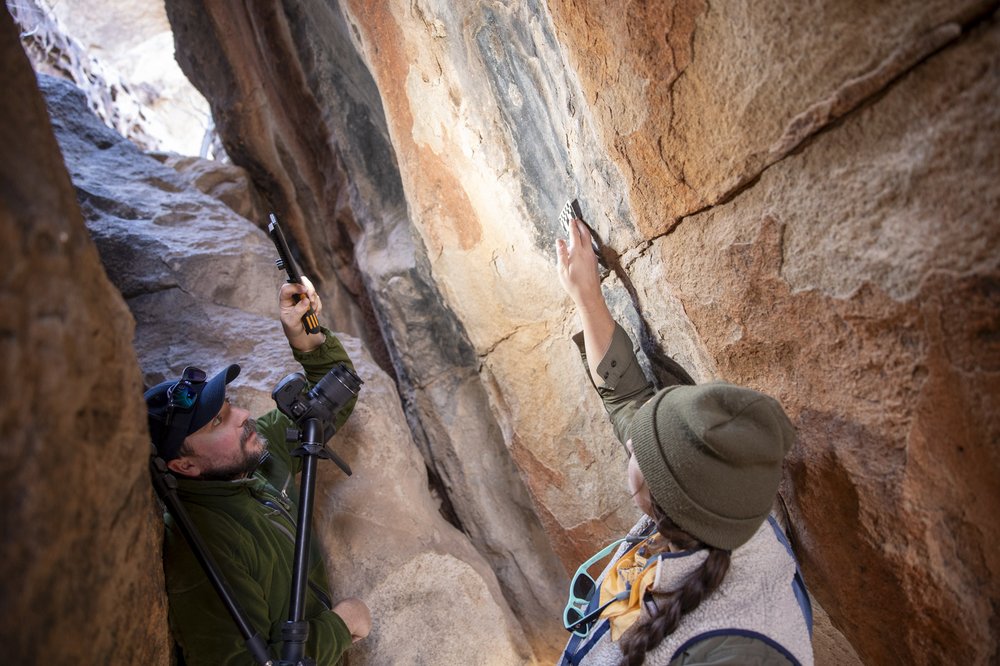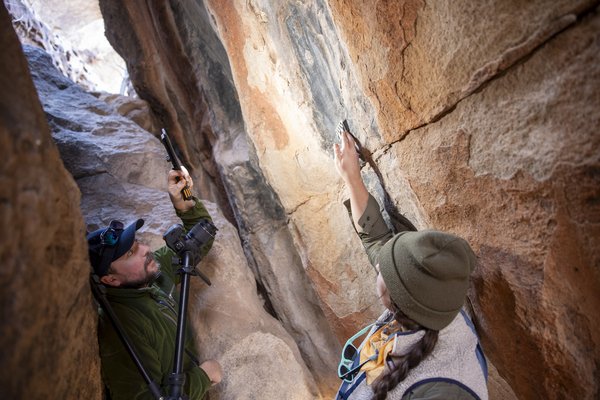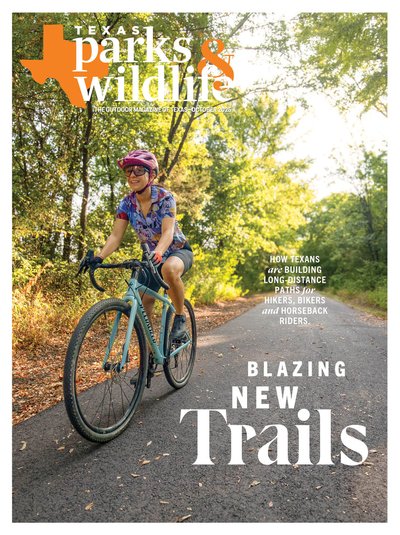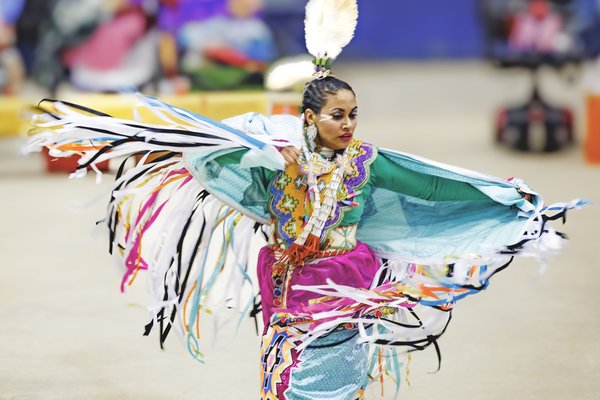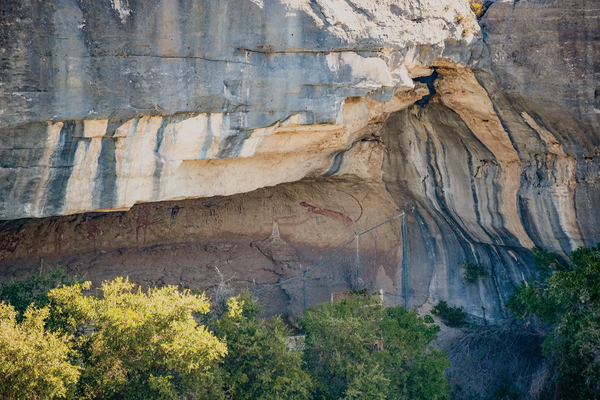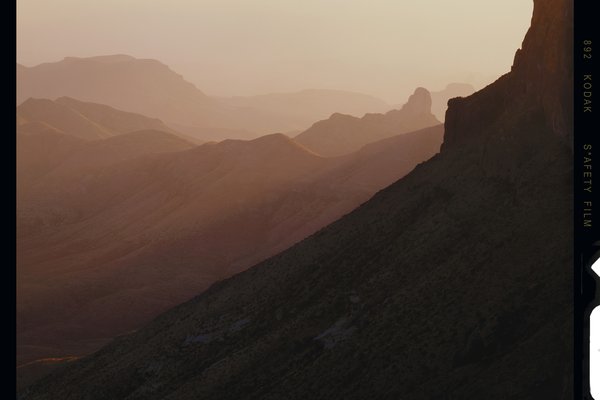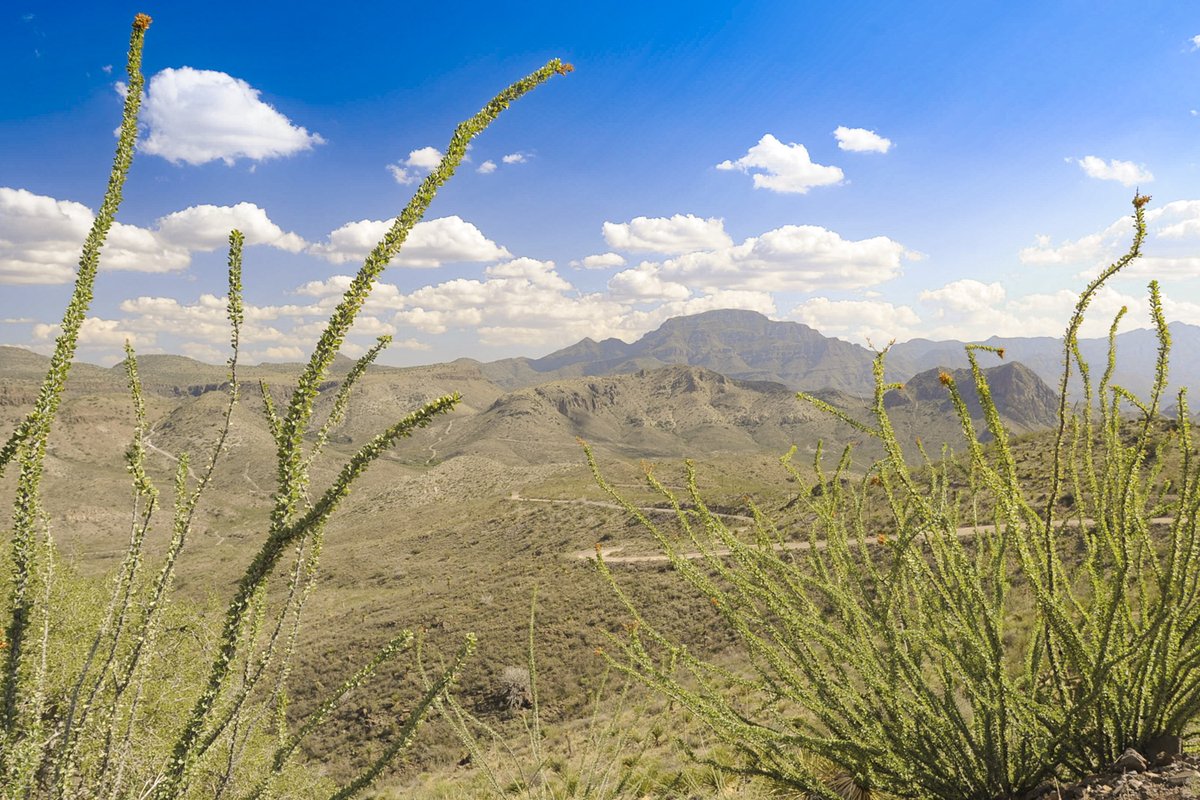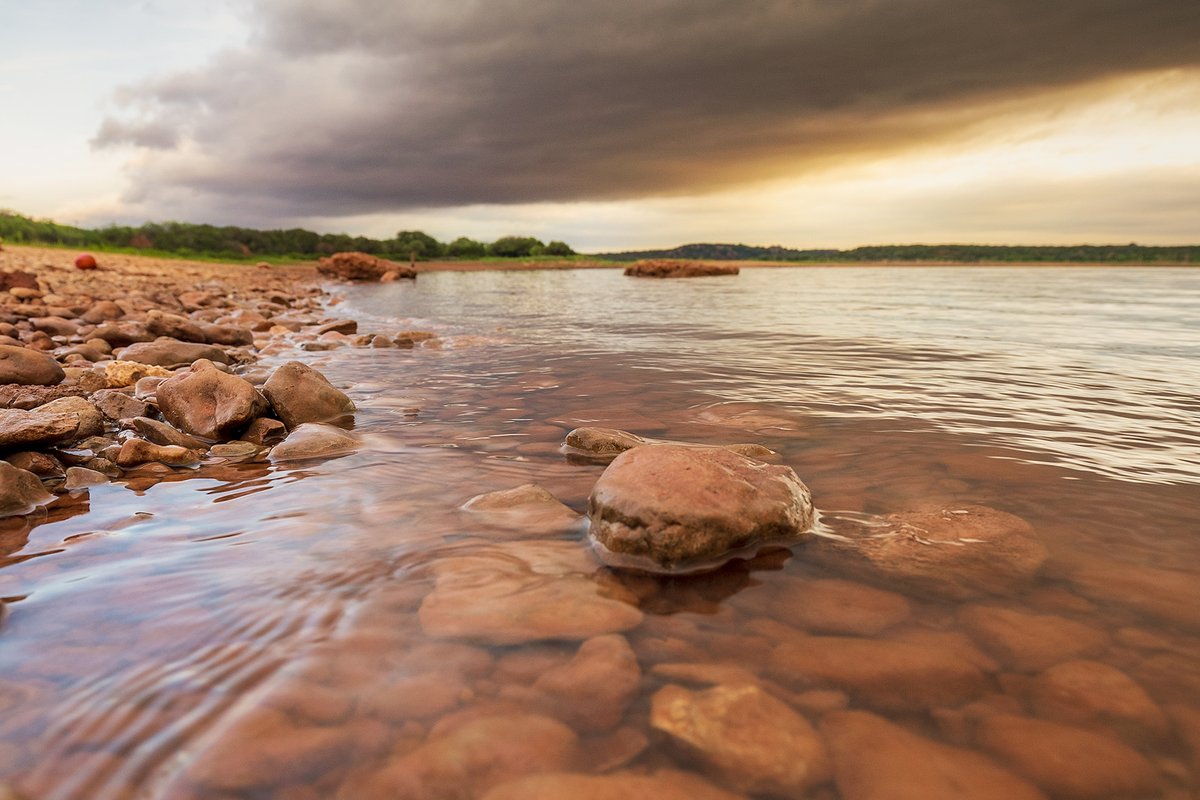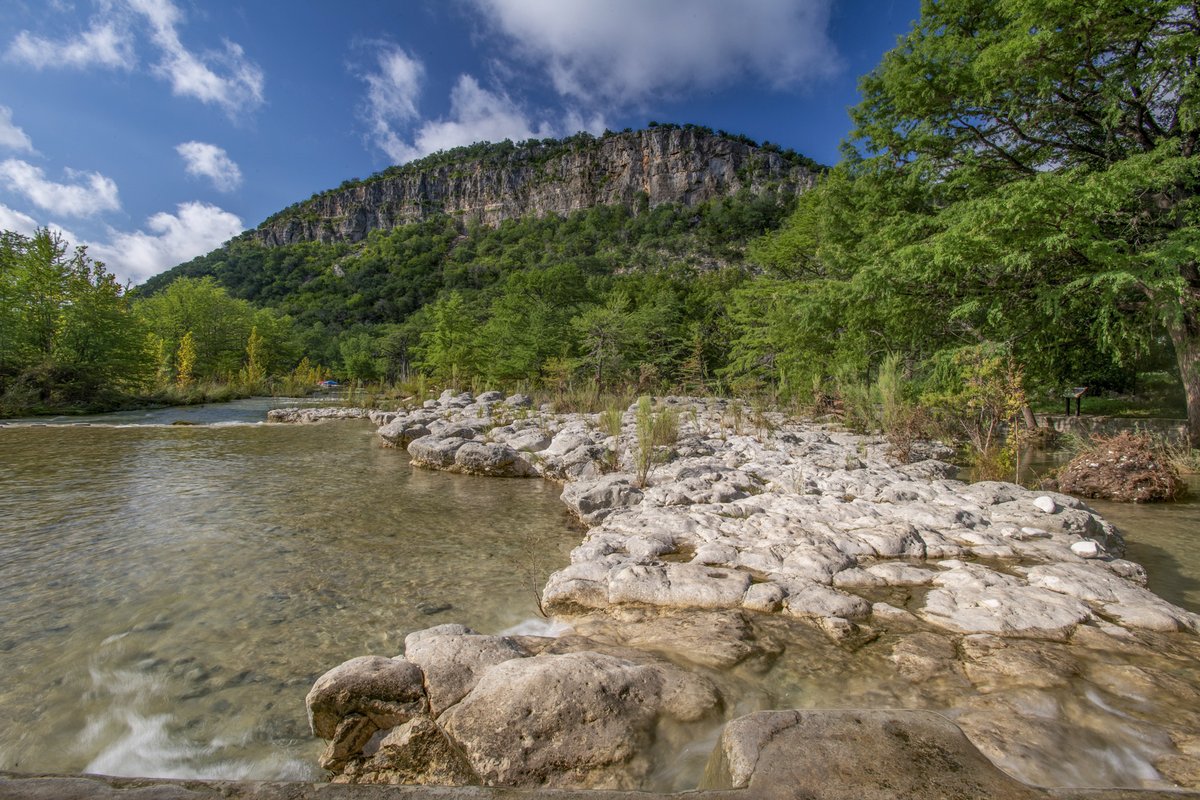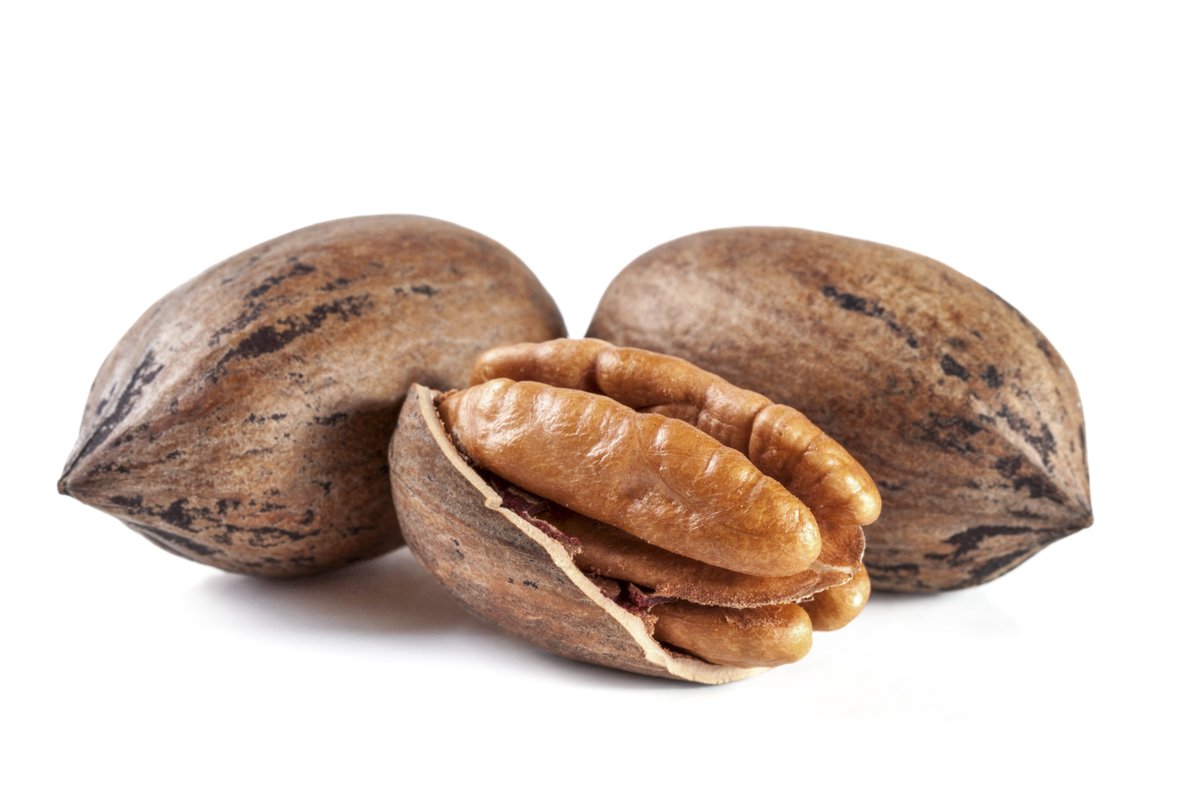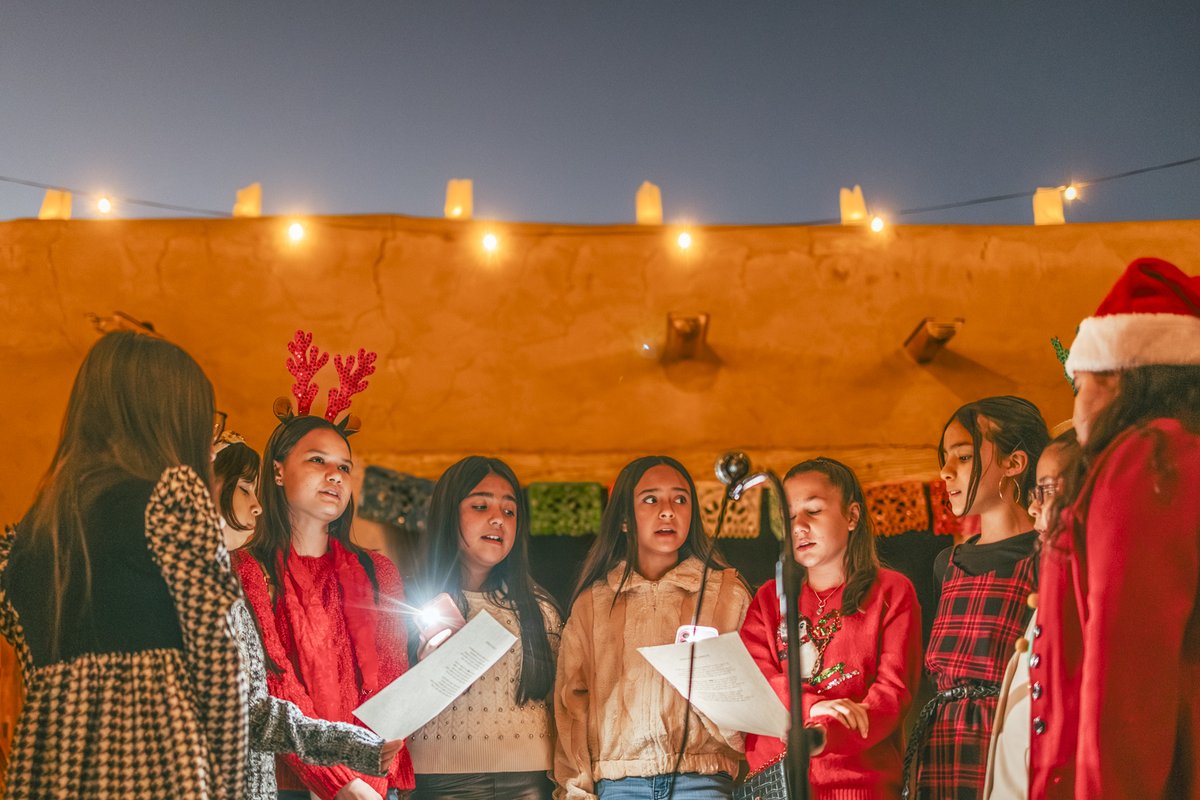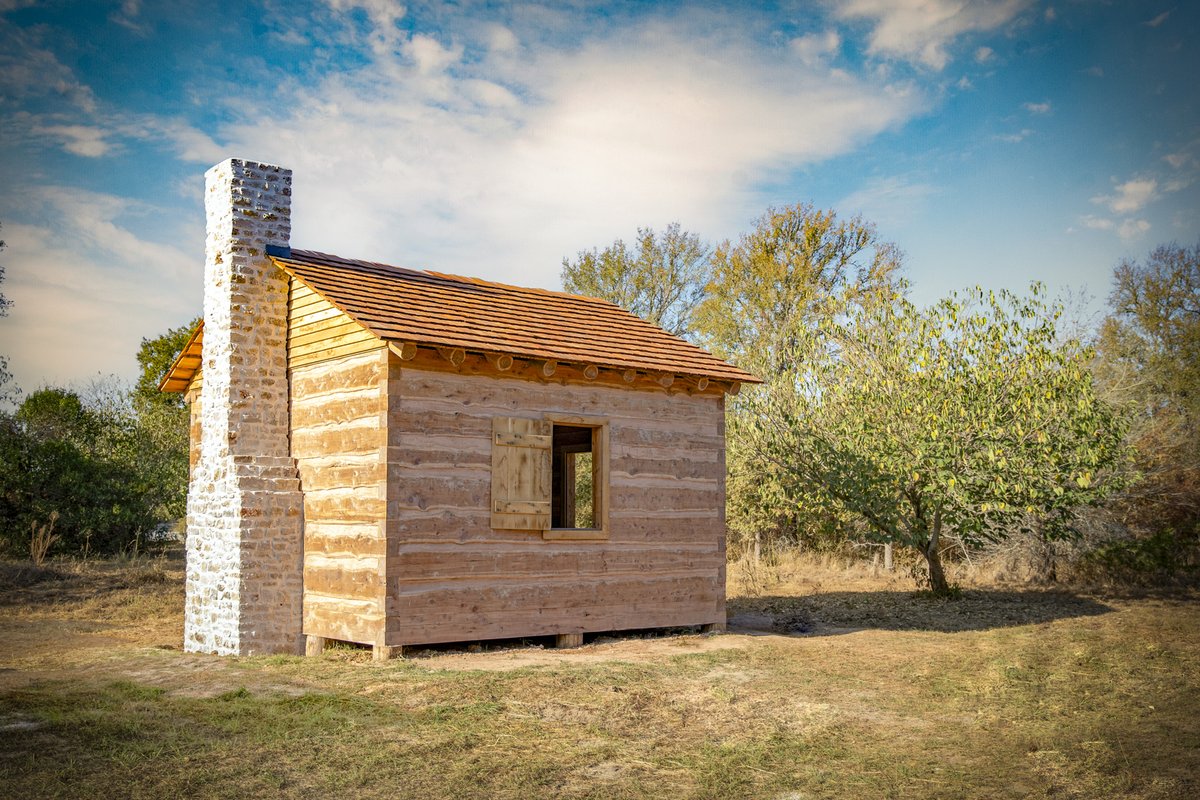A SOURCE OF food, shelter and water in the hot and dry Chihuahuan Desert, Hueco Tanks State Park and Historic Site, around 33 miles northeast of El Paso, has been a special site for people for more than 10,000 years. Indigenous groups would bring mineral pigments from far and wide to paint pictures of animals, humans and deities — many of which are still visible on the rocks today.
“Hueco Tanks is one of the major, most important premier rock art localities in North America,” says Myles Miller, an archeologist with a background in the indigenous cultures of the Trans-Pecos. “It has some of the most extensive and varied and long-term rock art that you can find anywhere.”
Starting this year, in the first survey of its kind at the site, archeologists and rock imagery experts at the contracting company Versar Global Solutions are conducting a thorough investigation of the entire park, documenting each panel of art they find.
Previous surveys of Hueco Tanks by avocational groups such as the El Paso Archeological Society had revealed thousands of pictographs already. This new survey, conducted by professional archeologists and aided by new technology, adds to the story of the site.
The researchers, who are only one year into the four-year project, have recorded more than 160 previously undiscovered pictographs panels. Initially they had expected to find about 300 new panels across all four years. “I don’t think any of us expected the density that we ended up recording,” says co-principal investigator Charles Koenig, who leads the project alongside Miller.
Searching for signs
To begin their survey, the researchers first had to figure out a method to catalog the four rugged mountains in the park. “If someone has been out there before, they know what a complicated landscape each one of these mountains is just in and of itself,” says Versar project archeologist Amanda Castaneda. “So one of the first things we had to do was get a really good handle on, ‘How are we going to track where we go on this mountain?’ We had to figure out a way to track as we climbed over, under, through, scooting, scrunching, ducking through every chamber that exists on the mountain.”
The team started off by taking high-resolution drone imagery and doing GPS work to separate the mountain into small parcels to study.
Then, they began the survey. As they maneuvered around the landscape, sometimes using a flashlight to illuminate the rock faces, the researchers kept their eyes peeled for signs of rock imagery such as small areas of irregular color. They then took high-resolution photos and ran them through an app called DStretch. “This software revolutionized the way that rock art researchers are able to do work,” says Castaneda.
The program allows researchers to run photos of their sites through a series of color channels that bring out variations in the image that are otherwise invisible to the naked eye.
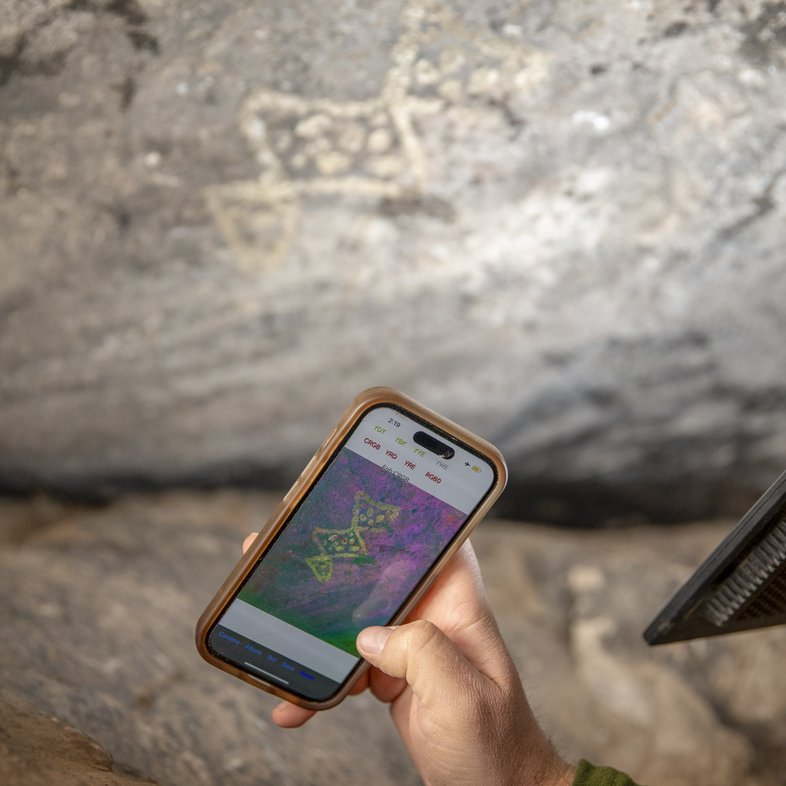
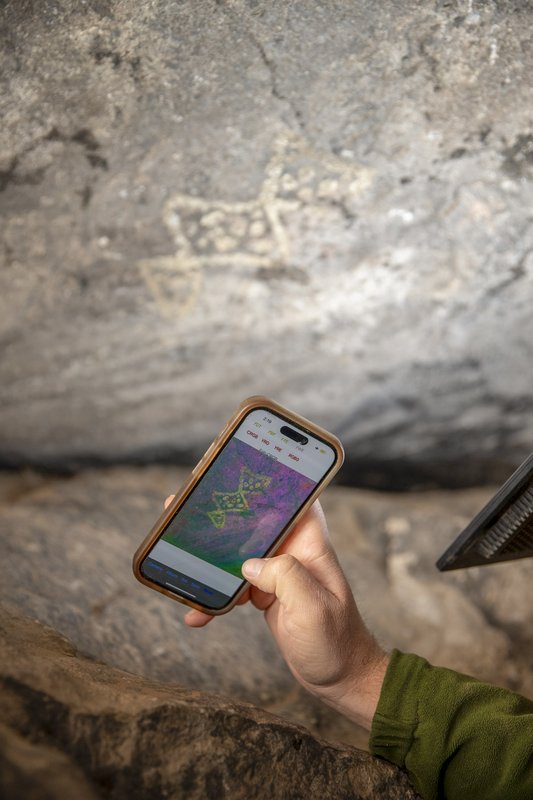
Researchers use an app called DStretch to better detect rock imagery.
Maegan Lanham
Researchers use an app called DStretch to better detect rock imagery.
Maegan Lanham
The app is likely why the team was able to uncover so many new panels. “It’s possible that a lot of these rock art sites were seen previously by the El Paso Archeological Society and others,” says Miller. “They went out there weekend after weekend and crawled and shimmied through all these places. They might have seen a lot of these locations, but all they could see was that light red remnant pigment, or just a faint shading of red or yellow, and they didn’t have DStretch to bring it out.”
The artists
HUECO TANKS rock imagery was created over thousands of years. The first drawings were done by a group of early hunters and gatherers who passed through the area between 5,000-8,000 years ago.
The bulk of the imagery was done much later, by the people researchers call the Jornada Mogollon. The Jornada style emerged around AD 600-800, when agriculturalism developed in the Southwestern U.S. and people transitioned from being mostly nomadic to living in villages.
“There was more of an emphasis on place-making in the landscape, identifying places of ancestral emergence, where underworld portals to ancestors were, or to rain spirits,” says Miller. “And so a lot of the rock art is during this period, and it has to do with those sorts of engagements with the spirit world.”
Later, more imagery was created by the Tigua, Mescalero Apache and other Plains Native American groups, some documenting their interactions with European and Mexican people.
The artists would use mineral pigments such as hematite for red, limonite for yellow, gypsum for white and charcoal for black, combined with a binder of some sort such as cactus juice or saliva.
People would bring pigments from far and wide. “With the exception of charcoal pigments, none of those minerals occur at Hueco Tanks,” says Miller. “So this is a planned action where they had to go into the landscape and find the sources of hematite, copper or whatever, and then plan to bring that to Hueco Tanks to create the art.”
“The source of the colorant is important,” says Castaneda. “Whether it’s a specific plant that you made your color from, or a particular place where you got your minerals from, it’s all really, really interconnected.”
The subjects depicted in the art include faces or “masks,” a mysterious goggle-eyed figure, geometric designs, dancing figures, jaguars, birds, deer, lightning, corn and many more.
What’s next?
OVER THE NEXT few years, the researchers will continue their survey over the rest of the park. Each year of the project will tackle a different one of the park’s four mountains. The data will inform TPWD’s management of the site, which must strike a delicate balance between recreation and preservation of a cultural resource in an area that is sacred to affiliated Native American tribes.
Luckily, the discoveries will likely have little impact on how climbers currently interact with Hueco Tanks. “We only located two newly recorded panels out of 161 that have evidence of climbing chalk on them, so we felt pretty good about that,” says Castaneda. “It doesn’t seem like a lot of these rock art locations are coinciding with climbing locations.”
